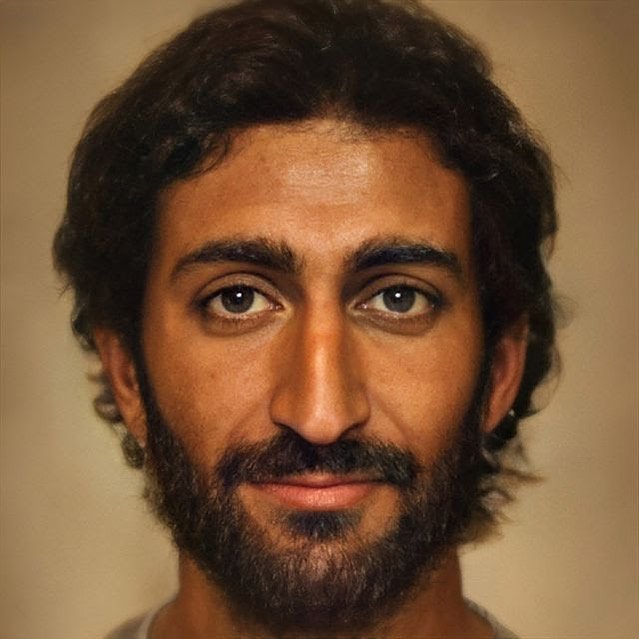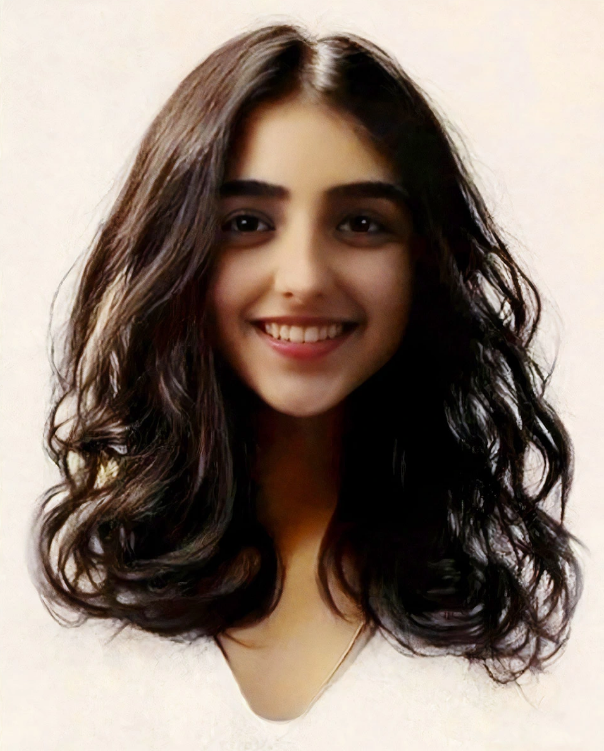The faces of Jesus and Mary reconstructed with artificial intelligence
In 2020 and 2021, the results of two technology-based studies and research on the Holy Shroud they have had repercussions around the world.
There are countless attempts to rebuild the faces of Jesus and Mary throughout history, but, in 2020 and 2021, the results of two works based on artificial intelligence software and research on the Holy Shroud of Turin have had worldwide resonance.
The face of Christ

The Dutch artist Bas Uterwijk presented, in 2020, his reconstruction of the face of Jesus Christ, made using the neural software Artbreeder, which applies artificial intelligence to a previously provided data set. With this technique, Uterwijk portrays historical characters and even ancient monuments, trying to achieve the most realistic results possible.
Despite the pursuit of realism as a general guideline, the artist pointed out, in statements to the British Daily Mail, that he considers his work more like art than science: “I try to drive the software to get a credible result. I think of my work more as an artistic interpretation than as historically and scientifically accurate images ”.
In 2018 the Italian researcher Julius Fanti, professor of mechanical and thermal measurements at the University of Padua and scholar of the Holy Shroud, had also presented a three-dimensional reconstruction of the physiognomy of Jesus, based on studies of the mysterious relic preserved in Turin.
The face of Mary

In November 2021, the Brazilian professor and designer Átila Soares from Costa Filho presented the results of four months of studies to try to achieve what would have been the physiognomy of the mother of Jesus. He also used the latest imaging and artificial intelligence technologies, as well as drawing on data obtained from extensive human research of the Holy Shroud of Turin.
Átila himself reported, in an exclusive interview with the journalist Ricardo Sanches, of Aleteia Português, that among his main foundations were the studios of the American designer Ray Downing, who, in 2010, was involved in a project with the most advanced technology. discover the true face of man on the Shroud.
"To this day, Downing's results are considered the most authentic and welcome of all attempts ever made," notes Attila, who, therefore, took that face as a basis and conducted experiments with artificial intelligence software and systems. high-tech neural networks, convolutional mechanisms for gender change. Finally, he used other facial retouching and manual artistic retouching programs applied to define an ethnically and anthropologically feminine physiognomy of 2000-year-old Palestine, while avoiding compromising what artificial intelligence had already provided.
The result was a surprising reconstruction of the face of the Blessed Virgin Mary in her adolescence.
Attila's project conclusions were endorsed by the world's greatest researcher and lecturer Barrie M. Schwortz, official photographer of the historian Project Sturp. At his invitation, the experiment was entered into the portal Shroud. com, which is the largest and most important source of information on the Holy Shroud ever compiled - and of which Swortz is the founder and administrator.
Attempts to reconstruct the faces of Jesus and Mary fuel relevant historical, scientific and theological debates and, at times, reactions of surprise and controversy.